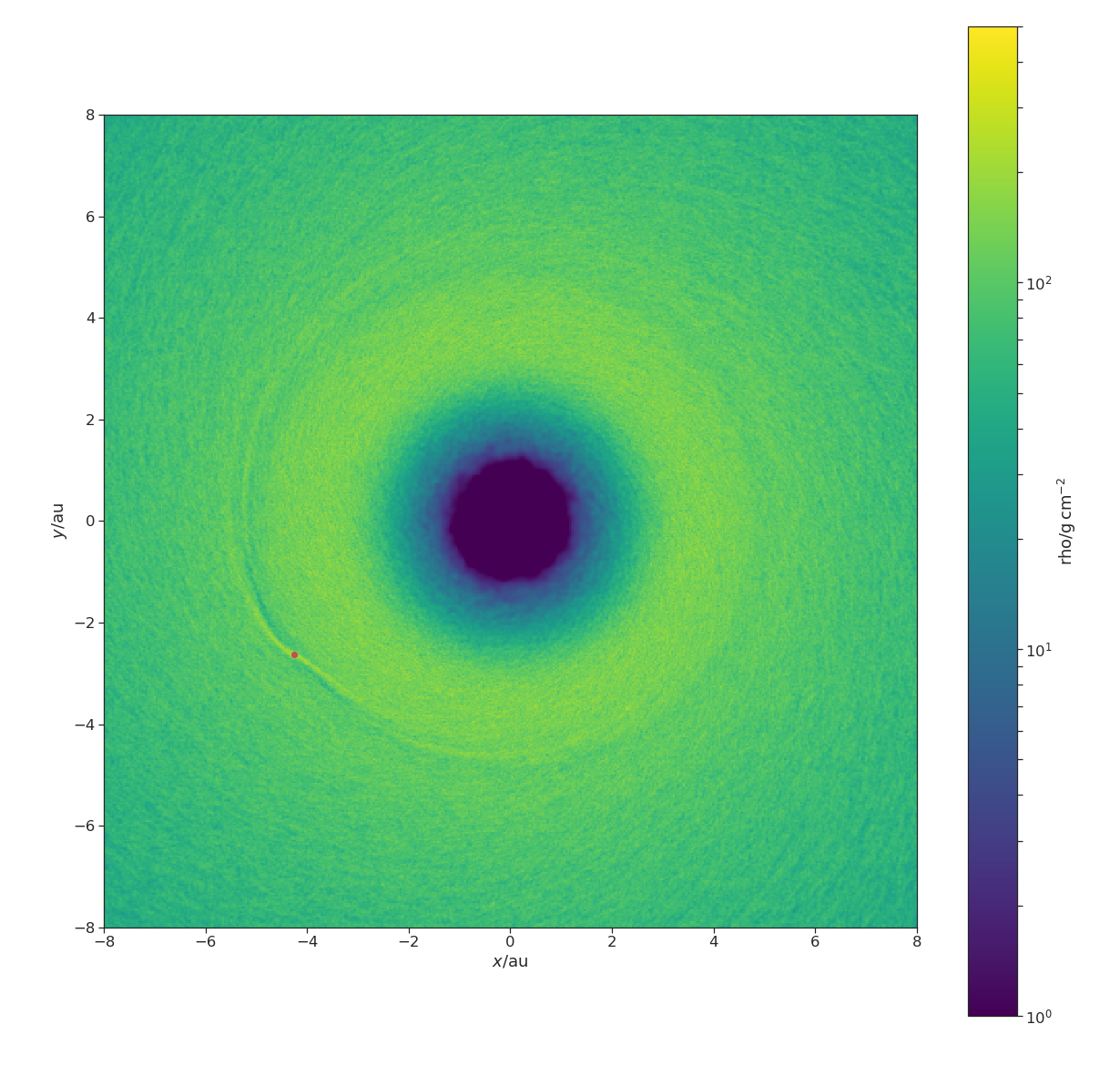Migration in gravitationally unstable protoplanetary discs
JAXA Supercomputer System Annual Report April 2018-March 2019
Report Number: R18ECWU00
Subject Category: Cooperative Graduate School System
- Responsible Representative: Elizabeth Tasker, Associate Professor in the Division of Solar System Science at ISAS / JAXA.
- Contact Information: Elizabeth Tasker(elizabeth.tasker@jaxa.jp)
- Members: Elizabeth Tasker, Ngan Kim Nguyen
Abstract
A long standing problem in planet formation theory is how the orbits of young planets change due to the drag of the gas still surrounding young stars. This project explores how gravitatonal structures (e.g. spiral arms) in the gas disc can affect this migration process. By modelling the motion of a planet in a gas disc around a star, we hope to demonstrate that the orbit of the planet depends on structures in the gas, thereby suggesting that different discs can result in different planet periods.
Reference URL
N/A
Reasons for using JSS2
The tools needed for this project are three-dimensional hydrodynamical simulations, run on several hundred cores. This is beyond what is possible on a desktop computer. The code used (ChaNGa) is designed for supercomputer facilities parallised with MPI,. Many different simulations are needed to see how different disc structures (depending on factors such as cooling and mass) affect the migration of a planet.
Achievements of the Year
Since December 2018, we have been developing simulations with different gas disc masses and different planet masses. In a light disc, a planet should move smoothly inwards, driven by the gas drag. This is seen clearly in the figure below for our highest resolution simulation. You can see the waves extending from the planet which are the so-called lindblad resonances that are exerting a torque on the planet. These preliminary results show that the gas drag on the planet is working as expected in the simulation. We are now progressing to discs that are not so light and stable in order to compare the planet motion.
Publications
N/A
Usage of JSS2
Computational Information
- Process Parallelization Methods: MPI
- Thread Parallelization Methods: OpenMP
- Number of Processes: 144 – 264
- Elapsed Time per Case: 50 Hour(s)
Resources Used
Fraction of Usage in Total Resources*1(%): 0.09
Details
Please refer to System Configuration of JSS2 for the system configuration and major specifications of JSS2.
| System Name | Amount of Core Time(core x hours) | Fraction of Usage*2(%) |
|---|---|---|
| SORA-MA | 0.00 | 0.00 |
| SORA-PP | 147,561.43 | 1.18 |
| SORA-LM | 0.00 | 0.00 |
| SORA-TPP | 0.00 | 0.00 |
| File System Name | Storage Assigned(GiB) | Fraction of Usage*2(%) |
|---|---|---|
| /home | 7.95 | 0.01 |
| /data | 79.47 | 0.00 |
| /ltmp | 1,627.60 | 0.14 |
| Archiver Name | Storage Used(TiB) | Fraction of Usage*2(%) |
|---|---|---|
| J-SPACE | 0.00 | 0.00 |
*1: Fraction of Usage in Total Resources: Weighted average of three resource types (Computing, File System, and Archiver).
*2: Fraction of Usage:Percentage of usage relative to each resource used in one year.
JAXA Supercomputer System Annual Report April 2018-March 2019



